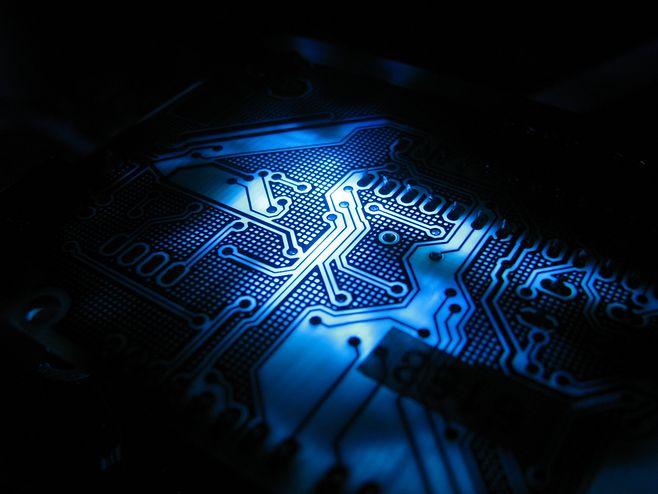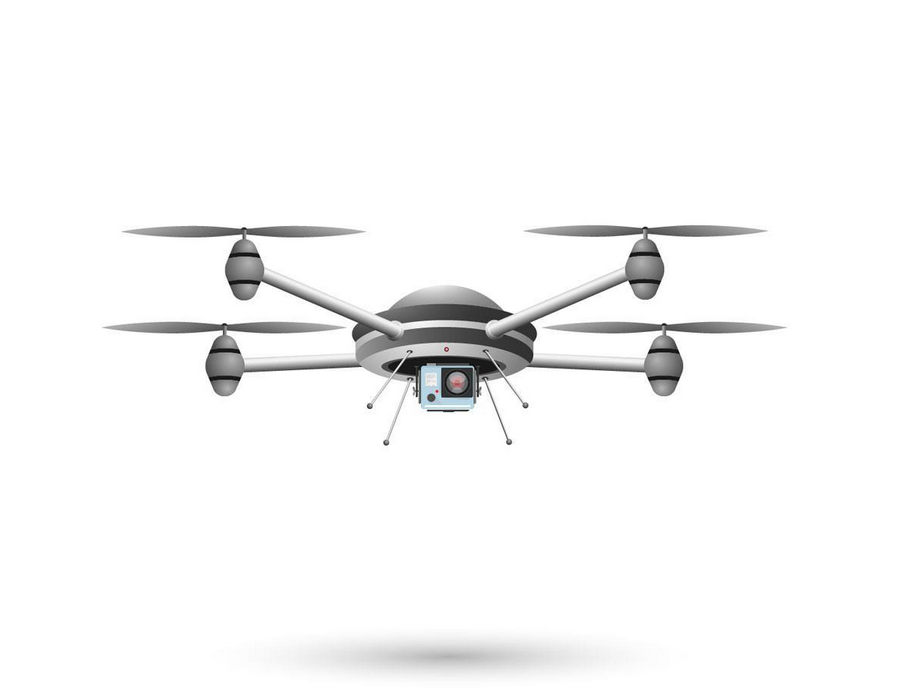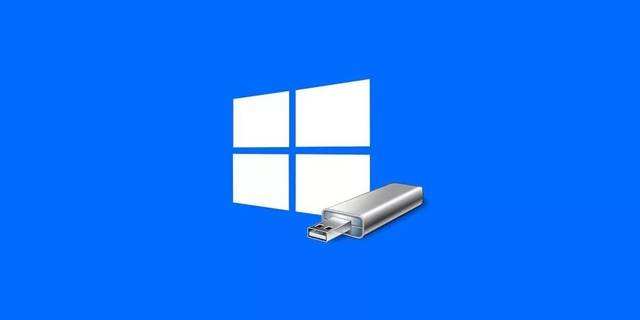先看一下成品是什么样子的
准备就做成这个样子的。
想象在电机不供电不动的情况下,将车放在地上下松手后,车子肯定会向前或向后倒,就像人站在一根细的杆子上,大脑不控制肯定是站不稳的,因为重心不在适当的点,人通过大脑完成调节,而平衡车调节靠STM32控制电机的转速,转向来使车平衡不倒。
电机带编码器x2,一般直接购买底盘;
电池座,18650电池x3;
M3铜柱、螺丝、螺母,多买一些备用,容易弄丢;
蓝牙模块;
亚克力板可以直接购买成品,也可以定制,会CAD用CAD画,不会用AD画,导出DXF格式,去某宝定制;
其他可能会用到的:2.4g模块,超声波模块,红外循迹模块,电机驱动模块,红外模块,MPU6050模块,STM32C8T6最小系统,MPU6050和STM32C8T6可以直接集成在板子上。
所需电子器件等硬件设计完成再购买。
因为使用3个18650电池串联,所以需要先降压,可以使用7805稳压芯片先降到5V,然后再通过AMS11173.3,将5V降到3.3v
因为用不到RTC,所以省略32.768KHz的晶振,只用8M的高速外部晶振
蓝牙模块使用购买的模块直插,所以只要添加对应管脚数的排母
TOP层:
BOTTOM层:
Comment
Description
Designator
Footprint
Value
Quantity
Cap2
引线型铝电解电容
C1, C2
RADIAL,6X12MM
16v,330uF
2
Cap
0603贴片电容
C3, C6, C7, C9, C10, C12, C13, C14, C16, C17, C18, C19, C20
0603C
100nF
13
Cap2
引线型铝电解电容
C4, C5
RADIAL,6X12MM
10v,470uF
2
Cap
0603贴片电容
C8
0603C
10nF
1
Cap2
引线型铝电解电容
C11
RADIAL,5X11MM
10uF,25V
1
Cap
0603贴片电容
C15
0603C
100pF
1
Cap
0603贴片电容
C22, C24
0603C
22pF
2
LED0
Red、Blue
D1, D2, D3, D4
0603LED
4
MF-NSMF050
保险丝
F1
1206F
1
Header 20P
20p排针
H1, H2
HDR1X20
2
CDS-2P
2p电源插座
J1
CDS-2P
1
BLUE
蓝牙模块
J2
BLUE
1
MSS22D18
贴片6脚开关
KG1
MSS22D18
1
PH-6P
PH2.0 6p插座
M1, M2
PH2.0 6P
2
Header 4
4p排针
P1
HDR1X4
1
Header 3X2
3x2p排针
P2
HDR2X3
1
Res2
0603贴片电阻
R1, R2, R4, R5, R6, R9
0603R
10K
6
Res2
0603贴片电阻
R3
0603R
3.3K
1
Res2
0603贴片电阻
R7, R8
0603R
100K
2
Res2
0603贴片电阻
R10, R11
0603R
680R
2
SW1
轻触按键开关
S2
KEY_4(SOP)
1
78M05
DCDC芯片
U1
TO-252-2-180
1
MPU-6050
六轴传感器
U2
QFN-24_4x4x05P
1
TB6612FNG
电机驱动芯片
U3
LC-SSOP-24_208mil
1
STM32F103C8
STM32 MCU
U4
LQFP-48_7x7x05P
1
AMS1117-3.3
低压差线性稳压(LDO)
VR1
SOT-23(SOT-23-3)
1
XTAL
直插式晶振HC-49S
Y2
XTAL_US
8M
1
拿着上面BOM表就可以配单了
先实现基本的直立控制,再实现通过上位机,遥控等方式控制小车行驶,因为控制小车的基础是基本的直立。两种PID控制方法,串级和并级,关于串并PID可以参考这里 ,两种PID参数是完全不相同的,需要分别调参。
主函数
1 2 3 4 5 6 7 8 9 10 11 12 13 14 15 16 17 18 19 20 21 22 23 24 25 26 27 28 29 #include "stm32f10x.h" #include "timer.h" #include "motor.h" #include "usart.h" #include "led.h" #include "I2C.h" #include "systick.h" #include "car.h" #include "mpu6050.h" int main (void ) NVIC_PriorityGroupConfig(NVIC_PriorityGroup_2); USART1_Config(); TIM2_PWM_Init(); TIM3_Encoder_Init(); TIM4_Encoder_Init(); MOTOR_GPIO_Config(); LED_GPIO_Config(); i2cInit(); delay_nms(10 ); MPU6050_Init(); CarUpstandInit(); SysTick_Init(); while (1 ) { MPU6050_Pose(); } }
延时函数使用粗略的延时,因为Systick被用于系统控制了,也可以开一个定时器延时
1 2 3 4 5 6 7 8 9 10 11 12 13 14 15 16 17 18 19 20 21 22 23 24 25 26 27 28 #include "stm32f10x.h" #include "delay.h" void delay_us (u32 n) u8 j; while (n--) for (j=0 ;j<10 ;j++); } void delay_ms (u32 n) while (n--) delay_us(1000 ); } void get_ms (unsigned long *time) } void delay_nms (u16 time) u16 i=0 ; while (time--) { i=12000 ; while (i--) ; } }
串口配置
1 2 3 4 5 6 7 8 9 10 11 12 13 14 15 16 17 18 19 20 21 22 23 24 25 26 27 28 29 30 31 32 33 34 35 36 37 38 39 40 41 42 43 44 45 46 47 48 49 50 #include "usart.h" #include <stdarg.h> #include "misc.h" #include "stm32f10x_usart.h" void USART1_Config (void ) GPIO_InitTypeDef GPIO_InitStructure; USART_InitTypeDef USART_InitStructure; RCC_APB2PeriphClockCmd(RCC_APB2Periph_USART1 | RCC_APB2Periph_GPIOA, ENABLE); GPIO_InitStructure.GPIO_Pin = GPIO_Pin_9; GPIO_InitStructure.GPIO_Mode = GPIO_Mode_AF_PP; GPIO_InitStructure.GPIO_Speed = GPIO_Speed_50MHz; GPIO_Init(GPIOA, &GPIO_InitStructure); GPIO_InitStructure.GPIO_Pin = GPIO_Pin_10; GPIO_InitStructure.GPIO_Mode = GPIO_Mode_IN_FLOATING; GPIO_Init(GPIOA, &GPIO_InitStructure); USART_InitStructure.USART_BaudRate = 115200 ; USART_InitStructure.USART_WordLength = USART_WordLength_8b; USART_InitStructure.USART_StopBits = USART_StopBits_1; USART_InitStructure.USART_Parity = USART_Parity_No ; USART_InitStructure.USART_HardwareFlowControl = USART_HardwareFlowControl_None; USART_InitStructure.USART_Mode = USART_Mode_Rx | USART_Mode_Tx; USART_Init(USART1, &USART_InitStructure); USART_Cmd(USART1, ENABLE); } int fputc (int ch, FILE *f) USART_SendData(USART1, (unsigned char ) ch); while (USART_GetFlagStatus(USART1,USART_FLAG_TC)!= SET); return (ch); } void PrintChar (char *s) char *p; p=s; while (*p != '\0' ) { USART_SendData(USART1, *p); while ( USART_GetFlagStatus(USART1,USART_FLAG_TC)!= SET); p++; } }
定时器配置
1 2 3 4 5 6 7 8 9 10 11 12 13 14 15 16 17 18 19 20 21 22 23 24 25 26 27 28 29 30 31 32 33 34 35 36 37 38 39 40 41 42 43 44 45 46 47 48 49 50 51 52 53 54 55 56 57 58 59 60 61 62 63 64 65 66 67 68 69 70 71 72 73 74 75 76 77 78 79 80 81 82 83 84 85 86 87 88 89 90 91 92 93 94 95 96 97 98 99 100 101 102 103 104 105 106 107 108 109 110 111 112 113 114 115 116 117 118 119 120 121 122 123 124 125 126 127 128 129 130 131 132 133 134 135 136 137 138 139 140 141 142 #include "timer.h" #include "sys.h" void TIM2_PWM_Init (void ) u16 CCR3_Val = 0 ; u16 CCR4_Val = 0 ; GPIO_InitTypeDef GPIO_InitStructure; TIM_TimeBaseInitTypeDef TIM_TimeBaseStructure; TIM_OCInitTypeDef TIM_OCInitStructure; RCC_APB1PeriphClockCmd(RCC_APB1Periph_TIM2, ENABLE); RCC_APB2PeriphClockCmd(RCC_APB2Periph_GPIOA, ENABLE); GPIO_InitStructure.GPIO_Pin = GPIO_Pin_2 | GPIO_Pin_3; GPIO_InitStructure.GPIO_Mode = GPIO_Mode_AF_PP; GPIO_InitStructure.GPIO_Speed = GPIO_Speed_50MHz; GPIO_Init(GPIOA, &GPIO_InitStructure); TIM_TimeBaseStructure.TIM_Period = 999 ; TIM_TimeBaseStructure.TIM_Prescaler = 0 ; TIM_TimeBaseStructure.TIM_ClockDivision = TIM_CKD_DIV1 ; TIM_TimeBaseStructure.TIM_CounterMode = TIM_CounterMode_Up; TIM_TimeBaseInit(TIM2, &TIM_TimeBaseStructure); TIM_OCInitStructure.TIM_OCMode = TIM_OCMode_PWM1; TIM_OCInitStructure.TIM_OutputState = TIM_OutputState_Enable; TIM_OCInitStructure.TIM_Pulse = CCR3_Val; TIM_OCInitStructure.TIM_OCPolarity = TIM_OCPolarity_High; TIM_OC3Init(TIM2, &TIM_OCInitStructure); TIM_OC3PreloadConfig(TIM2, TIM_OCPreload_Enable); TIM_OCInitStructure.TIM_OutputState = TIM_OutputState_Enable; TIM_OCInitStructure.TIM_Pulse = CCR4_Val; TIM_OCInitStructure.TIM_OCPolarity = TIM_OCPolarity_High; TIM_OC4Init(TIM2, &TIM_OCInitStructure); TIM_OC4PreloadConfig(TIM2, TIM_OCPreload_Enable); TIM_ARRPreloadConfig(TIM2, ENABLE); TIM_Cmd(TIM2, ENABLE); } void TIM3_Encoder_Init (void ) GPIO_InitTypeDef GPIO_InitStructure; TIM_TimeBaseInitTypeDef TIM_TimeBaseStructure; TIM_ICInitTypeDef TIM_ICInitStructure; NVIC_InitTypeDef NVIC_InitStructure; RCC_APB1PeriphClockCmd(RCC_APB1Periph_TIM3, ENABLE); RCC_APB2PeriphClockCmd(RCC_APB2Periph_GPIOA, ENABLE); GPIO_InitStructure.GPIO_Pin = GPIO_Pin_6 | GPIO_Pin_7; GPIO_InitStructure.GPIO_Mode = GPIO_Mode_IN_FLOATING; GPIO_InitStructure.GPIO_Speed = GPIO_Speed_50MHz; GPIO_Init(GPIOA, &GPIO_InitStructure); NVIC_InitStructure.NVIC_IRQChannel = TIM3_IRQn; NVIC_InitStructure.NVIC_IRQChannelPreemptionPriority =1 ; NVIC_InitStructure.NVIC_IRQChannelSubPriority = 3 ; NVIC_InitStructure.NVIC_IRQChannelCmd = ENABLE; NVIC_Init(&NVIC_InitStructure); TIM_DeInit(TIM3); TIM_TimeBaseStructure.TIM_Prescaler = 0x0 ; TIM_TimeBaseStructure.TIM_Period = 0xFFFF ; TIM_TimeBaseStructure.TIM_CounterMode = TIM_CounterMode_Up; TIM_TimeBaseInit(TIM3, &TIM_TimeBaseStructure); TIM_EncoderInterfaceConfig(TIM3, TIM_EncoderMode_TI12, TIM_ICPolarity_BothEdge, TIM_ICPolarity_BothEdge); TIM_ICStructInit(&TIM_ICInitStructure); TIM_ICInitStructure.TIM_ICFilter = 6 ; TIM_ICInit(TIM3, &TIM_ICInitStructure); TIM_ClearFlag(TIM3, TIM_FLAG_Update); TIM_ITConfig(TIM3, TIM_IT_Update, ENABLE); TIM_Cmd(TIM3, ENABLE); } void TIM4_Encoder_Init (void ) GPIO_InitTypeDef GPIO_InitStructure; TIM_TimeBaseInitTypeDef TIM_TimeBaseStructure; TIM_ICInitTypeDef TIM_ICInitStructure; NVIC_InitTypeDef NVIC_InitStructure; RCC_APB1PeriphClockCmd(RCC_APB1Periph_TIM4, ENABLE); RCC_APB2PeriphClockCmd(RCC_APB2Periph_GPIOB, ENABLE); GPIO_StructInit(&GPIO_InitStructure); GPIO_InitStructure.GPIO_Pin = GPIO_Pin_6 | GPIO_Pin_7; GPIO_InitStructure.GPIO_Mode = GPIO_Mode_IN_FLOATING; GPIO_InitStructure.GPIO_Speed = GPIO_Speed_50MHz; GPIO_Init(GPIOB, &GPIO_InitStructure); NVIC_InitStructure.NVIC_IRQChannel = TIM4_IRQn; NVIC_InitStructure.NVIC_IRQChannelPreemptionPriority = 1 ; NVIC_InitStructure.NVIC_IRQChannelSubPriority = 3 ; NVIC_InitStructure.NVIC_IRQChannelCmd = ENABLE; NVIC_Init(&NVIC_InitStructure); TIM_DeInit(TIM4); TIM_TimeBaseStructure.TIM_Prescaler = 0x0 ; TIM_TimeBaseStructure.TIM_Period = 0xFFFF ; TIM_TimeBaseStructure.TIM_CounterMode = TIM_CounterMode_Up; TIM_TimeBaseInit(TIM4, &TIM_TimeBaseStructure); TIM_EncoderInterfaceConfig(TIM4, TIM_EncoderMode_TI12, TIM_ICPolarity_BothEdge, TIM_ICPolarity_BothEdge); TIM_ICStructInit(&TIM_ICInitStructure); TIM_ICInitStructure.TIM_ICFilter = 6 ; TIM_ICInit(TIM4, &TIM_ICInitStructure); TIM_ClearFlag(TIM4, TIM_FLAG_Update); TIM_ITConfig(TIM4, TIM_IT_Update, ENABLE); TIM_Cmd(TIM4, ENABLE); } void TIM3_IRQHandler (void ) if (TIM_GetITStatus(TIM3,TIM_IT_Update)!=0 ) { TIM_ClearITPendingBit(TIM3,TIM_IT_Update); } } void TIM4_IRQHandler (void ) if (TIM_GetITStatus(TIM4,TIM_IT_Update)!=0 ) { TIM_ClearITPendingBit(TIM4,TIM_IT_Update); } }
电机配置
1 2 3 4 5 6 7 8 9 10 11 12 13 14 15 #include "motor.h" #include "stm32f10x.h" void MOTOR_GPIO_Config () GPIO_InitTypeDef GPIO_InitStructure; RCC_APB2PeriphClockCmd(RCC_APB2Periph_GPIOB, ENABLE); GPIO_InitStructure.GPIO_Pin = GPIO_Pin_12 | GPIO_Pin_13 | GPIO_Pin_14 | GPIO_Pin_15; GPIO_InitStructure.GPIO_Mode = GPIO_Mode_Out_PP; GPIO_InitStructure.GPIO_Speed = GPIO_Speed_50MHz; GPIO_Init(GPIOB, &GPIO_InitStructure); GPIO_SetBits(GPIOB, GPIO_Pin_13 | GPIO_Pin_14|GPIO_Pin_12 | GPIO_Pin_15); }
LED配置
1 2 3 4 5 6 7 8 9 10 11 12 13 14 15 16 17 18 #include "led.h" #include "stm32f10x.h" void LED_GPIO_Config (void ) GPIO_InitTypeDef GPIO_InitStructure; RCC_APB2PeriphClockCmd(RCC_APB2Periph_GPIOC| RCC_APB2Periph_AFIO,ENABLE); GPIO_PinRemapConfig(GPIO_Remap_SWJ_JTAGDisable , ENABLE); GPIO_InitStructure.GPIO_Pin = GPIO_Pin_13; GPIO_InitStructure.GPIO_Speed = GPIO_Speed_50MHz; GPIO_InitStructure.GPIO_Mode = GPIO_Mode_Out_PP; GPIO_Init(GPIOC, &GPIO_InitStructure); GPIO_SetBits(GPIOC, GPIO_Pin_13); }
软件I2C
1 2 3 4 5 6 7 8 9 10 11 12 13 14 15 16 17 18 19 20 21 22 23 24 25 26 27 28 29 30 31 32 33 34 35 36 37 38 39 40 41 42 43 44 45 46 47 48 49 50 51 52 53 54 55 56 57 58 59 60 61 62 63 64 65 66 67 68 69 70 71 72 73 74 75 76 77 78 79 80 81 82 83 84 85 86 87 88 89 90 91 92 93 94 95 96 97 98 99 100 101 102 103 104 105 106 107 108 109 110 111 112 113 114 115 116 117 118 119 120 121 122 123 124 125 126 127 128 129 130 131 132 133 134 135 136 137 138 139 140 141 142 143 144 145 146 147 148 149 150 151 152 153 154 155 156 157 158 159 160 161 162 163 164 165 166 167 168 169 170 171 172 173 174 175 176 177 178 179 180 181 182 183 184 185 186 187 188 189 190 191 192 193 194 195 196 197 198 199 200 201 202 203 204 205 206 207 208 209 210 211 212 213 214 215 216 217 218 219 220 221 222 223 224 225 226 227 228 229 230 231 232 233 234 235 #include "I2C.h" #define SCL_H GPIOB->BSRR = GPIO_Pin_8 #define SCL_L GPIOB->BRR = GPIO_Pin_8 #define SDA_H GPIOB->BSRR = GPIO_Pin_9 #define SDA_L GPIOB->BRR = GPIO_Pin_9 #define SCL_read GPIOB->IDR & GPIO_Pin_8 #define SDA_read GPIOB->IDR & GPIO_Pin_9 static void I2C_delay (void ) volatile int i = 7 ; while (i) i--; } static bool I2C_Start (void ) SDA_H; SCL_H; I2C_delay(); if (!SDA_read) return false ; SDA_L; I2C_delay(); if (SDA_read) return false ; SDA_L; I2C_delay(); return true ; } static void I2C_Stop (void ) SCL_L; I2C_delay(); SDA_L; I2C_delay(); SCL_H; I2C_delay(); SDA_H; I2C_delay(); } static void I2C_Ack (void ) SCL_L; I2C_delay(); SDA_L; I2C_delay(); SCL_H; I2C_delay(); SCL_L; I2C_delay(); } static void I2C_NoAck (void ) SCL_L; I2C_delay(); SDA_H; I2C_delay(); SCL_H; I2C_delay(); SCL_L; I2C_delay(); } static bool I2C_WaitAck (void ) SCL_L; I2C_delay(); SDA_H; I2C_delay(); SCL_H; I2C_delay(); if (SDA_read) { SCL_L; return false ; } SCL_L; return true ; } static void I2C_SendByte (uint8_t byte) uint8_t i = 8 ; while (i--) { SCL_L; I2C_delay(); if (byte & 0x80 ) SDA_H; else SDA_L; byte <<= 1 ; I2C_delay(); SCL_H; I2C_delay(); } SCL_L; } static uint8_t I2C_ReceiveByte (void ) uint8_t i = 8 ; uint8_t byte = 0 ; SDA_H; while (i--) { byte <<= 1 ; SCL_L; I2C_delay(); SCL_H; I2C_delay(); if (SDA_read) { byte |= 0x01 ; } } SCL_L; return byte; } void i2cInit (void ) GPIO_InitTypeDef gpio; RCC_APB2PeriphClockCmd(RCC_APB2Periph_GPIOB , ENABLE); gpio.GPIO_Pin = GPIO_Pin_8 | GPIO_Pin_9; gpio.GPIO_Speed = GPIO_Speed_2MHz; gpio.GPIO_Mode = GPIO_Mode_Out_OD; GPIO_Init(GPIOB, &gpio); } bool i2cWriteBuffer (uint8_t addr, uint8_t reg, uint8_t len, uint8_t * data) int i; if (!I2C_Start()) return false ; I2C_SendByte(addr << 1 | I2C_Direction_Transmitter); if (!I2C_WaitAck()) { I2C_Stop(); return false ; } I2C_SendByte(reg); I2C_WaitAck(); for (i = 0 ; i < len; i++) { I2C_SendByte(data[i]); if (!I2C_WaitAck()) { I2C_Stop(); return false ; } } I2C_Stop(); return true ; } int8_t i2cwrite (uint8_t addr, uint8_t reg, uint8_t len, uint8_t * data) if (i2cWriteBuffer(addr,reg,len,data)) { return TRUE; } else { return FALSE; } } int8_t i2cread (uint8_t addr, uint8_t reg, uint8_t len, uint8_t *buf) if (i2cRead(addr,reg,len,buf)) { return TRUE; } else { return FALSE; } } bool i2cWrite (uint8_t addr, uint8_t reg, uint8_t data) if (!I2C_Start()) return false ; I2C_SendByte(addr << 1 | I2C_Direction_Transmitter); if (!I2C_WaitAck()) { I2C_Stop(); return false ; } I2C_SendByte(reg); I2C_WaitAck(); I2C_SendByte(data); I2C_WaitAck(); I2C_Stop(); return true ; } bool i2cRead (uint8_t addr, uint8_t reg, uint8_t len, uint8_t *buf) if (!I2C_Start()) return false ; I2C_SendByte(addr << 1 | I2C_Direction_Transmitter); if (!I2C_WaitAck()) { I2C_Stop(); return false ; } I2C_SendByte(reg); I2C_WaitAck(); I2C_Start(); I2C_SendByte(addr << 1 | I2C_Direction_Receiver); I2C_WaitAck(); while (len) { *buf = I2C_ReceiveByte(); if (len == 1 ) I2C_NoAck(); else I2C_Ack(); buf++; len--; } I2C_Stop(); return true ; } uint16_t i2cGetErrorCounter (void ) return 0 ; }
Systick配置
1 2 3 4 5 6 7 8 9 10 11 12 13 14 15 16 17 18 19 20 21 22 23 #include "systick.h" #include "stm32f10x.h" #include "car.h" u16 TimeDelay=0 ; extern void SysTick_Init (void ) if (SysTick_Config(SystemCoreClock / 200 )) { while (1 ); } SysTick->CTRL |= SysTick_CTRL_ENABLE_Msk; } void SysTick_Handler (void ) GetMotorPulse(); SpeedControl(); TurnControl(); AngleControl(); MotorOutput(); }
小车平衡控制
1 2 3 4 5 6 7 8 9 10 11 12 13 14 15 16 17 18 19 20 21 22 23 24 25 26 27 28 29 30 31 32 33 34 35 36 37 38 39 40 41 42 43 44 45 46 47 48 49 50 51 52 53 54 55 56 57 58 59 60 61 62 63 64 65 66 67 68 69 70 71 72 73 74 75 76 77 78 79 80 81 82 83 84 85 86 87 88 89 90 91 92 93 94 95 96 97 98 99 100 101 102 103 104 105 106 107 108 109 110 111 112 113 114 115 116 117 118 119 120 121 122 123 124 125 126 127 128 129 130 131 132 133 134 135 136 137 138 139 140 141 142 143 144 145 146 147 148 149 150 151 152 153 154 155 156 157 158 159 160 161 162 163 164 165 166 167 168 169 170 171 172 173 174 175 176 177 178 179 180 181 182 183 184 185 186 187 188 189 190 191 192 193 194 195 #include "car.h" #include "stm32f10x.h" #include "mpu6050.h" #include "timer.h" float BST_fCarSpeed;float BST_fCarSpeedOld;float BST_fCarPosition;float BST_fCarAngle;float BST_fAngleControlOut;float BST_fSpeedControlOut;float BST_fTurnControlOut;float BST_fLeftMotorOut;float BST_fRightMotorOut;float BST_fSpeedControlOut;float BST_fSpeedControlOutOld;float BST_fSpeedControlOutNew;float BST_fAngleControlOut;float BST_fTurnControlOut;float BST_fLeftMotorOut;float BST_fRightMotorOut;float BST_fCarAngle_P =84 ;float BST_fCarAngle_D =0.3 ;float BST_fCarSpeed_P=-0.4 ;float BST_fCarSpeed_I=-0.002 ;float BST_fCarTurn=-0.28 ;s16 BST_s16LeftMotorPulse; s16 BST_s16RightMotorPulse; s32 BST_s32LeftMotorPulseOld; s32 BST_s32RightMotorPulseOld; s32 BST_s32LeftMotorPulseSigma; s32 BST_s32RightMotorPulseSigma; float BST_fCarSpeed;float BST_fCarSpeedOld;float BST_fCarPosition;int leftstop=0 ;int rightstop=0 ;int stopflag=0 ;void CarUpstandInit (void ) BST_s16LeftMotorPulse = BST_s16RightMotorPulse = 0 ; BST_s32LeftMotorPulseSigma = BST_s32RightMotorPulseSigma = 0 ; BST_fCarSpeed = BST_fCarSpeedOld = 0 ; BST_fCarPosition = 0 ; BST_fCarAngle= 0 ; BST_fAngleControlOut = BST_fSpeedControlOut=0 ; BST_fLeftMotorOut= BST_fRightMotorOut = 0 ; } void GetMotorPulse (void ) uint16_t u16TempLeft; uint16_t u16TempRight; u16TempLeft = TIM_GetCounter(TIM3); u16TempRight= TIM_GetCounter(TIM4); leftstop=u16TempLeft; rightstop=u16TempRight; TIM_SetCounter(TIM3,0 ); TIM_SetCounter(TIM4,0 ); BST_s16LeftMotorPulse=u16TempLeft; BST_s16RightMotorPulse=(-u16TempRight); BST_s32LeftMotorPulseSigma +=BST_s16LeftMotorPulse; BST_s32RightMotorPulseSigma +=BST_s16RightMotorPulse; } void AngleControl (void ) if (Pitch==0 ||Pitch<-20 ||Pitch>20 ) { GPIO_ResetBits(GPIOC, GPIO_Pin_13); } else {GPIO_SetBits(GPIOC, GPIO_Pin_13);} BST_fCarAngle = Roll- CAR_ZERO_ANGLE; BST_fAngleControlOut = (BST_fCarAngle-BST_fSpeedControlOutNew) * BST_fCarAngle_P + gyro[0 ] * BST_fCarAngle_D ; } void TurnControl (void ) BST_fTurnControlOut=BST_fCarTurn*gyro[2 ]; } void SpeedControl (void ) BST_fCarSpeed = (BST_s32LeftMotorPulseSigma + BST_s32RightMotorPulseSigma ); BST_s32LeftMotorPulseSigma =BST_s32RightMotorPulseSigma = 0 ; BST_fCarSpeedOld *= 0.7 ; BST_fCarSpeedOld +=BST_fCarSpeed*0.3 ; BST_fCarPosition += BST_fCarSpeedOld; if (stopflag==1 ) { BST_fCarPosition=0 ; } if ((s32)BST_fCarPosition > CAR_POSITION_MAX) BST_fCarPosition = CAR_POSITION_MAX; if ((s32)BST_fCarPosition < CAR_POSITION_MIN) BST_fCarPosition = CAR_POSITION_MIN; BST_fSpeedControlOutNew = (BST_fCarSpeedOld-CAR_SPEED_SET ) * BST_fCarSpeed_P + (BST_fCarPosition - CAR_POSITION_SET ) * BST_fCarSpeed_I; } void MotorOutput (void ) BST_fLeftMotorOut = BST_fAngleControlOut-BST_fTurnControlOut; BST_fRightMotorOut = BST_fAngleControlOut+BST_fTurnControlOut; if ((s16)BST_fLeftMotorOut > MOTOR_OUT_MAX) BST_fLeftMotorOut = MOTOR_OUT_MAX; if ((s16)BST_fLeftMotorOut < MOTOR_OUT_MIN) BST_fLeftMotorOut = MOTOR_OUT_MIN; if ((s16)BST_fRightMotorOut > MOTOR_OUT_MAX) BST_fRightMotorOut = MOTOR_OUT_MAX; if ((s16)BST_fRightMotorOut < MOTOR_OUT_MIN) BST_fRightMotorOut = MOTOR_OUT_MIN; SetMotorVoltageAndDirection((s16)BST_fLeftMotorOut,(s16)BST_fRightMotorOut); } void SetMotorVoltageAndDirection (s16 s16LeftVoltage,s16 s16RightVoltage) u16 u16LeftMotorValue; u16 u16RightMotorValue; if (s16LeftVoltage<0 ) { GPIO_SetBits(GPIOB, GPIO_Pin_14 ); GPIO_ResetBits(GPIOB, GPIO_Pin_15 ); s16LeftVoltage = (-s16LeftVoltage); } else { GPIO_SetBits(GPIOB, GPIO_Pin_15 ); GPIO_ResetBits(GPIOB, GPIO_Pin_14 ); s16LeftVoltage = s16LeftVoltage; } if (s16RightVoltage<0 ) { GPIO_SetBits(GPIOB, GPIO_Pin_13 ); GPIO_ResetBits(GPIOB, GPIO_Pin_12 ); s16RightVoltage = (-s16RightVoltage); } else { GPIO_SetBits(GPIOB, GPIO_Pin_12 ); GPIO_ResetBits(GPIOB, GPIO_Pin_13 ); s16RightVoltage = s16RightVoltage; } u16RightMotorValue= (u16)s16RightVoltage; u16LeftMotorValue = (u16)s16LeftVoltage; TIM_SetCompare3(TIM2,u16LeftMotorValue); TIM_SetCompare4(TIM2,u16RightMotorValue); #if 1 if (Pitch>40 ||Pitch<-40 ) { TIM_SetCompare3(TIM2,0 ); TIM_SetCompare4(TIM2,0 ); stopflag=1 ; } else stopflag=0 ; if (BST_fCarAngle > 50 || BST_fCarAngle < (-50 )) { TIM_SetCompare3(TIM2,0 ); TIM_SetCompare4(TIM2,0 ); stopflag=1 ; } else stopflag=0 ; #endif }
MPU6050
1 2 3 4 5 6 7 8 9 10 11 12 13 14 15 16 17 18 19 20 21 22 23 24 25 26 27 28 29 30 31 32 33 34 35 36 37 38 39 40 41 42 43 44 45 46 47 48 49 50 51 52 53 54 55 56 57 58 59 60 61 62 63 64 65 66 67 68 69 70 71 72 73 74 75 76 77 78 79 80 81 82 83 84 85 86 87 88 89 90 91 92 93 94 95 96 97 98 99 100 101 102 103 104 105 106 #include "mpu6050.h" #include "i2c.h" #include "inv_mpu.h" #include "inv_mpu_dmp_motion_driver.h" #include "usart.h" #include "math.h" static signed char gyro_orientation[9 ] = {-1 , 0 , 0 , 0 ,-1 , 0 , 0 , 0 , 1 }; float q0=1.0f ,q1=0.0f ,q2=0.0f ,q3=0.0f ;float Pitch,Roll,Yaw;unsigned long sensor_timestamp;short gyro[3 ], accel[3 ], sensors;unsigned char more;long quat[4 ];void MPU6050_Init (void ) int result=0 ; result=mpu_init(); if (!result) { PrintChar("mpu initialization complete......\n " ); if (!mpu_set_sensors(INV_XYZ_GYRO | INV_XYZ_ACCEL)) PrintChar("mpu_set_sensor complete ......\n" ); else PrintChar("mpu_set_sensor come across error ......\n" ); if (!mpu_configure_fifo(INV_XYZ_GYRO | INV_XYZ_ACCEL)) PrintChar("mpu_configure_fifo complete ......\n" ); else PrintChar("mpu_configure_fifo come across error ......\n" ); if (!mpu_set_sample_rate(DEFAULT_MPU_HZ)) PrintChar("mpu_set_sample_rate complete ......\n" ); else PrintChar("mpu_set_sample_rate error ......\n" ); if (!dmp_load_motion_driver_firmware()) PrintChar("dmp_load_motion_driver_firmware complete ......\n" ); else PrintChar("dmp_load_motion_driver_firmware come across error ......\n" ); if (!dmp_set_orientation(inv_orientation_matrix_to_scalar(gyro_orientation))) PrintChar("dmp_set_orientation complete ......\n" ); else PrintChar("dmp_set_orientation come across error ......\n" ); if (!dmp_enable_feature(DMP_FEATURE_6X_LP_QUAT | DMP_FEATURE_TAP | DMP_FEATURE_ANDROID_ORIENT | DMP_FEATURE_SEND_RAW_ACCEL | DMP_FEATURE_SEND_CAL_GYRO | DMP_FEATURE_GYRO_CAL)) PrintChar("dmp_enable_feature complete ......\n" ); else PrintChar("dmp_enable_feature come across error ......\n" ); if (!dmp_set_fifo_rate(DEFAULT_MPU_HZ)) PrintChar("dmp_set_fifo_rate complete ......\n" ); else PrintChar("dmp_set_fifo_rate come across error ......\n" ); run_self_test(); if (!mpu_set_dmp_state(1 )) PrintChar("mpu_set_dmp_state complete ......\n" ); else PrintChar("mpu_set_dmp_state come across error ......\n" ); } else { GPIO_ResetBits(GPIOC, GPIO_Pin_13); while (1 ); } } void MPU6050_Pose (void ) dmp_read_fifo(gyro, accel, quat, &sensor_timestamp, &sensors,&more); if (sensors & INV_WXYZ_QUAT ) { q0 = quat[0 ] / q30; q1 = quat[1 ] / q30; q2 = quat[2 ] / q30; q3 = quat[3 ] / q30; Pitch = asin (-2 * q1 * q3 + 2 * q0* q2)* 57.3 ; Roll = atan2 (2 * q2 * q3 + 2 * q0 * q1, -2 * q1 * q1 - 2 * q2* q2 + 1 )*57.3 ; Yaw = atan2 (2 *(q1*q2 + q0*q3),q0*q0+q1*q1-q2*q2-q3*q3) * 57.3 ; } }
并级PID和串级PID只有Systick中断服务函数和小车控制部分不一样
Systick
1 2 3 4 5 6 7 8 9 10 11 12 13 14 15 16 17 18 19 20 21 22 23 24 25 26 27 28 29 30 31 #include "systick.h" #include "stm32f10x.h" #include "car.h" u16 TimeDelay=0 ; extern void SysTick_Init (void ) if (SysTick_Config(SystemCoreClock / 200 )) { while (1 ); } SysTick->CTRL |= SysTick_CTRL_ENABLE_Msk; } void SysTick_Handler (void ) BST_u8SpeedControlCount++; GetMotorPulse(); AngleControl(); TurnControl(); MotorOutput(); if (BST_u8SpeedControlCount>=8 ) { SpeedControl(); BST_u8SpeedControlCount=0 ; BST_u8SpeedControlPeriod=0 ; } }
小车平衡控制
1 2 3 4 5 6 7 8 9 10 11 12 13 14 15 16 17 18 19 20 21 22 23 24 25 26 27 28 29 30 31 32 33 34 35 36 37 38 39 40 41 42 43 44 45 46 47 48 49 50 51 52 53 54 55 56 57 58 59 60 61 62 63 64 65 66 67 68 69 70 71 72 73 74 75 76 77 78 79 80 81 82 83 84 85 86 87 88 89 90 91 92 93 94 95 96 97 98 99 100 101 102 103 104 105 106 107 108 109 110 111 112 113 114 115 116 117 118 119 120 121 122 123 124 125 126 127 128 129 130 131 132 133 134 135 136 137 138 139 140 141 142 143 144 145 146 147 148 149 150 151 152 153 154 155 156 157 158 159 160 161 162 163 164 165 166 167 168 169 170 171 172 173 174 175 176 177 178 179 180 181 182 183 184 185 186 187 188 189 190 191 192 193 194 195 196 197 198 199 200 201 202 203 204 205 206 207 208 209 210 211 212 213 214 215 216 217 #include "car.h" #include "stm32f10x.h" #include "mpu6050.h" #include "timer.h" float BST_fCarSpeed;float BST_fCarSpeedOld;float BST_fCarPosition;float BST_fCarAngle;float BST_fAngleControlOut;float BST_fSpeedControlOut;float BST_fLeftMotorOut;float BST_fRightMotorOut;float BST_u8MainEventCount=0 ;float BST_u8SpeedControlCount=0 ;float BST_u8SpeedControlPeriod=0 ;u8 BST_u8DirectionControlPeriod; u8 BST_u8DirectionControlCount; float BST_fSpeedControlOut;float BST_fSpeedControlOutOld;float BST_fSpeedControlOutNew;float BST_fAngleControlOut;float BST_fTurnControlOut;float BST_fLeftMotorOut;float BST_fRightMotorOut;float BST_fCarAngle;float gyro_z;float gyrx;float gy0;float BST_fCarAngle_P =91.3 ;float BST_fCarAngle_D =0.21 ; float BST_fCarSpeed_P=5.1 ;float BST_fCarSpeed_I=0.10 ;float BST_fCarTurn=0.4 ;const double PID_Original[4 ] ={91.3 , 0.21 , 5.1 , 0.10 }; char alldata[80 ];char *iap;s16 BST_s16LeftMotorPulse; s16 BST_s16RightMotorPulse; s32 BST_s32LeftMotorPulseOld; s32 BST_s32RightMotorPulseOld; s32 BST_s32LeftMotorPulseSigma; s32 BST_s32RightMotorPulseSigma; float BST_fCarSpeed;float BST_fCarSpeedOld;float BST_fCarPosition;int leftstop=0 ;int rightstop=0 ;int stopflag=0 ;void CarUpstandInit (void ) BST_s16LeftMotorPulse = BST_s16RightMotorPulse = 0 ; BST_s32LeftMotorPulseSigma = BST_s32RightMotorPulseSigma = 0 ; BST_fCarSpeed = BST_fCarSpeedOld = 0 ; BST_fCarPosition = 0 ; BST_fCarAngle= 0 ; BST_fAngleControlOut = BST_fSpeedControlOut=0 ; BST_fLeftMotorOut= BST_fRightMotorOut = 0 ; BST_u8MainEventCount=0 ; BST_u8SpeedControlCount=0 ; BST_u8SpeedControlPeriod=0 ; } void GetMotorPulse (void ) uint16_t u16TempLeft; uint16_t u16TempRight; u16TempLeft = TIM_GetCounter(TIM3); u16TempRight= TIM_GetCounter(TIM4); leftstop=u16TempLeft; rightstop=u16TempRight; TIM_SetCounter(TIM3,0 ); TIM_SetCounter(TIM4,0 ); BST_s16LeftMotorPulse=u16TempLeft; BST_s16RightMotorPulse=(-u16TempRight); BST_s32LeftMotorPulseSigma +=BST_s16LeftMotorPulse; BST_s32RightMotorPulseSigma +=BST_s16RightMotorPulse; } void AngleControl (void ) if (Pitch==0 ||Pitch<-20 ||Pitch>20 ) { GPIO_ResetBits(GPIOC, GPIO_Pin_13); } else {GPIO_SetBits(GPIOC, GPIO_Pin_13);} BST_fCarAngle = Roll- CAR_ZERO_ANGLE; BST_fAngleControlOut = BST_fCarAngle * BST_fCarAngle_P + gyro[0 ] * BST_fCarAngle_D ; } void TurnControl (void ) BST_fTurnControlOut=BST_fCarTurn*gyro[2 ]; } void SpeedControl (void ) BST_fCarSpeed = (BST_s32LeftMotorPulseSigma + BST_s32RightMotorPulseSigma ); BST_s32LeftMotorPulseSigma =BST_s32RightMotorPulseSigma = 0 ; BST_fCarSpeedOld *= 0.7 ; BST_fCarSpeedOld +=BST_fCarSpeed*0.3 ; BST_fCarPosition += BST_fCarSpeedOld; if (stopflag==1 ) { BST_fCarPosition=0 ; } if ((s32)BST_fCarPosition > CAR_POSITION_MAX) BST_fCarPosition = CAR_POSITION_MAX; if ((s32)BST_fCarPosition < CAR_POSITION_MIN) BST_fCarPosition = CAR_POSITION_MIN; BST_fSpeedControlOutNew = (BST_fCarSpeedOld -CAR_SPEED_SET ) * BST_fCarSpeed_P + (BST_fCarPosition - CAR_POSITION_SET ) * BST_fCarSpeed_I; } void MotorOutput (void ) BST_fLeftMotorOut = BST_fAngleControlOut +BST_fSpeedControlOutNew+BST_fTurnControlOut; BST_fRightMotorOut = BST_fAngleControlOut +BST_fSpeedControlOutNew-BST_fTurnControlOut; if ((s16)BST_fLeftMotorOut > MOTOR_OUT_MAX) BST_fLeftMotorOut = MOTOR_OUT_MAX; if ((s16)BST_fLeftMotorOut < MOTOR_OUT_MIN) BST_fLeftMotorOut = MOTOR_OUT_MIN; if ((s16)BST_fRightMotorOut > MOTOR_OUT_MAX) BST_fRightMotorOut = MOTOR_OUT_MAX; if ((s16)BST_fRightMotorOut < MOTOR_OUT_MIN) BST_fRightMotorOut = MOTOR_OUT_MIN; SetMotorVoltageAndDirection((s16)BST_fLeftMotorOut,(s16)BST_fRightMotorOut); } void SetMotorVoltageAndDirection (s16 s16LeftVoltage,s16 s16RightVoltage) u16 u16LeftMotorValue; u16 u16RightMotorValue; if (s16LeftVoltage<0 ) { GPIO_SetBits(GPIOB, GPIO_Pin_14 ); GPIO_ResetBits(GPIOB, GPIO_Pin_15 ); s16LeftVoltage = (-s16LeftVoltage); } else { GPIO_SetBits(GPIOB, GPIO_Pin_15 ); GPIO_ResetBits(GPIOB, GPIO_Pin_14 ); s16LeftVoltage = s16LeftVoltage; } if (s16RightVoltage<0 ) { GPIO_SetBits(GPIOB, GPIO_Pin_13 ); GPIO_ResetBits(GPIOB, GPIO_Pin_12 ); s16RightVoltage = (-s16RightVoltage); } else { GPIO_SetBits(GPIOB, GPIO_Pin_12 ); GPIO_ResetBits(GPIOB, GPIO_Pin_13 ); s16RightVoltage = s16RightVoltage; } u16RightMotorValue= (u16)s16RightVoltage; u16LeftMotorValue = (u16)s16LeftVoltage; TIM_SetCompare3(TIM2,u16LeftMotorValue); TIM_SetCompare4(TIM2,u16RightMotorValue); #if 1 if (Pitch>40 ||Pitch<-40 ) { TIM_SetCompare3(TIM2,0 ); TIM_SetCompare4(TIM2,0 ); stopflag=1 ; } else stopflag=0 ; if (BST_fCarAngle > 50 || BST_fCarAngle < (-50 )) { TIM_SetCompare3(TIM2,0 ); TIM_SetCompare4(TIM2,0 ); stopflag=1 ; } else stopflag=0 ; #endif }
步骤:
把所有Kp和Ki设置为0;
从角度环开始调,先调Kp,确定Kp极性,现将Kp设定一个正值,如果轮子走向和倾斜的方向相同,则极性正确,Kp为正值,否则极性错误,Kp为负值,Kp绝对值从小到大开始调,直到车子出现明显抖动,之后调节Kd值,Kd值得极性确定,将Kp设置为0,将Kd设置为一个正值,将一个轮子用手转动,另一个轮子同向转动,则极性正确,Kd为正值,否则极性错误,Kd为负值,然后将刚刚调的Kp再填上,将Kd的绝对值从小到大调,直到车子出现高频抖动,之后将Kp,Kd的值 * 0.6作为最终Kp,Kd值;
然后调节速度环,ki=1/200Kp,极性和Kp相同,设置Kp同时设置Ki,确定Kp的极性,将角度环的Kp,Kd设为0,速度环Ki设为0,Kp设置为一个正值,将一个轮子用手转动,另一个轮子同向转动,则极性正确,Kp为正值,否则极性错误,Kp为负值,将Kp绝对值从小到大调,直到小车速度接近0,回位效果好,将此时的Kp,Ki作为最终Kp,Ki;
然后调转向环,将其他PID参数设置为0,将转向参数设置为一个正值,将车子往一个方向转动,如果车子是顺着转的方向转,则转向参数极性错误,转向参数应为负值,否则为正值,增大转向参数绝对值,直到车子能不往一个方向转动切没有抖动现象。
Remote.c
1 2 3 4 5 6 7 8 9 10 11 12 13 14 15 16 17 18 19 20 21 22 23 24 25 26 27 28 29 30 31 32 33 34 35 36 37 38 39 40 41 42 43 44 45 46 47 48 49 50 51 52 53 54 55 56 57 58 59 60 61 62 63 #include "Remote.h" #include "NRF24L01.h" #include "stm32f10x.h" #include "car.h" #include "usart.h" float BST_BluetoothSpeed=0 ;void Remote_Control (void ) if (Fore==0 &&Back==0 &&Left==0 &&Right==0 ) { if (BST_BluetoothSpeed<=2.5 &&BST_BluetoothSpeed>=-2.5 ) { BST_BluetoothSpeed=0 ; } if (BST_BluetoothSpeed>5 ) { BST_BluetoothSpeed-=5 ; } if (BST_BluetoothSpeed<-5 ) { BST_BluetoothSpeed+=5 ; } if (BST_BluetoothSpeed==0 &&BST_fCarSpeed>=-2.5 &&BST_fCarSpeed<=2.5 ) { BST_fCarTurn_Kd=0.24 ; } BST_fCarTurn_Kp=0 ; } else if (Fore==1 ) { BST_fCarTurn_Kd=0.24 ; BST_BluetoothSpeed+=5 ; } else if (Back==1 ) { BST_fCarTurn_Kd=0.24 ; BST_BluetoothSpeed-=5 ; } else if (Left==1 ) { BST_fCarTurn_Kd=0 ; BST_fCarTurn_Kp=1 ; BST_TurnSpeed+=20 ; } else if (Right==1 ) { BST_fCarTurn_Kd=0 ; BST_fCarTurn_Kp=1 ; BST_TurnSpeed-=20 ; } BST_BluetoothSpeed=BST_BluetoothSpeed>300 ?300 :(BST_BluetoothSpeed<-300 ?-300 :BST_BluetoothSpeed); BST_TurnSpeed=BST_TurnSpeed>500 ?500 :(BST_TurnSpeed<-500 ?-500 :BST_TurnSpeed); }
Car.c
1 2 3 4 5 6 7 8 9 10 11 12 13 14 15 16 17 18 19 20 21 22 23 24 25 26 27 28 29 30 31 32 33 34 35 36 37 38 39 40 41 42 43 44 45 46 47 48 49 50 51 52 53 54 55 56 57 58 59 60 61 62 63 64 65 66 67 68 69 70 71 72 73 74 75 76 77 78 79 80 81 82 83 84 85 86 87 88 89 90 91 92 93 94 95 96 97 98 99 100 101 102 103 104 105 106 107 108 109 110 111 112 113 114 115 116 117 118 119 120 121 122 123 124 125 126 127 128 129 130 131 132 133 134 135 136 137 138 139 140 141 142 143 144 145 146 147 148 149 150 151 152 153 154 155 156 157 158 159 160 161 162 163 164 165 166 167 168 169 170 171 172 173 174 175 176 177 178 179 180 181 182 183 184 185 186 187 188 189 190 191 192 193 194 195 196 197 198 199 200 201 202 203 204 205 206 207 208 209 210 211 212 213 214 215 216 217 218 219 220 221 222 223 224 225 226 227 #include "car.h" #include "stm32f10x.h" #include "mpu6050.h" #include "timer.h" #include "Remote.h" float CAR_SPEED_SET=0 ;float CAR_ZERO_ANGLE=0 ;float BST_fCarSpeed;float BST_fCarSpeedOld;float BST_TurnSpeed=0 ;float BST_fCarPosition;float BST_fCarAngle;float BST_fAngleControlOut;float BST_fSpeedControlOut;float BST_fLeftMotorOut;float BST_fRightMotorOut;float BST_u8MainEventCount=0 ;float BST_u8SpeedControlCount=0 ;float BST_u8SpeedControlPeriod=0 ;u8 BST_u8DirectionControlPeriod; u8 BST_u8DirectionControlCount; float BST_fSpeedControlOut;float BST_fSpeedControlOutOld;float BST_fSpeedControlOutNew;float BST_fAngleControlOut;float BST_fTurnControlOut;float BST_fLeftMotorOut;float BST_fRightMotorOut;float BST_fCarAngle;float gyro_z;float gyrx;float gy0;float BST_fCarAngle_P =91.3 ;float BST_fCarAngle_D =0.22 ; float BST_fCarSpeed_P=5.1 ;float BST_fCarSpeed_I=0.10 ;float BST_fCarTurn_Kd=0.24 ;float BST_fCarTurn_Kp=0 ;const double PID_Original[4 ] ={91.3 , 0.21 , 5.1 , 0.10 }; char alldata[80 ];char *iap;s16 BST_s16LeftMotorPulse; s16 BST_s16RightMotorPulse; s32 BST_s32LeftMotorPulseOld; s32 BST_s32RightMotorPulseOld; s32 BST_s32LeftMotorPulseSigma; s32 BST_s32RightMotorPulseSigma; float BST_fCarSpeed;float BST_fCarSpeedOld;float BST_fCarPosition;int leftstop=0 ;int rightstop=0 ;int stopflag=0 ;void CarUpstandInit (void ) BST_s16LeftMotorPulse = BST_s16RightMotorPulse = 0 ; BST_s32LeftMotorPulseSigma = BST_s32RightMotorPulseSigma = 0 ; BST_fCarSpeed = BST_fCarSpeedOld = 0 ; BST_fCarPosition = 0 ; BST_fCarAngle= 0 ; BST_fAngleControlOut = BST_fSpeedControlOut=0 ; BST_fLeftMotorOut= BST_fRightMotorOut = 0 ; BST_u8MainEventCount=0 ; BST_u8SpeedControlCount=0 ; BST_u8SpeedControlPeriod=0 ; } void GetMotorPulse (void ) uint16_t u16TempLeft; uint16_t u16TempRight; u16TempLeft = TIM_GetCounter(TIM3); u16TempRight= TIM_GetCounter(TIM4); leftstop=u16TempLeft; rightstop=u16TempRight; TIM_SetCounter(TIM3,0 ); TIM_SetCounter(TIM4,0 ); BST_s16LeftMotorPulse=u16TempLeft; BST_s16RightMotorPulse=(-u16TempRight); BST_s32LeftMotorPulseSigma +=BST_s16LeftMotorPulse; BST_s32RightMotorPulseSigma +=BST_s16RightMotorPulse; } void AngleControl (void ) if (Pitch==0 ||Pitch<-20 ||Pitch>20 ) { GPIO_ResetBits(GPIOC, GPIO_Pin_13); } else {GPIO_SetBits(GPIOC, GPIO_Pin_13);} BST_fCarAngle = Roll- CAR_ZERO_ANGLE; BST_fAngleControlOut = BST_fCarAngle * BST_fCarAngle_P + gyro[0 ] * BST_fCarAngle_D ; } void TurnControl (void ) BST_fTurnControlOut=BST_fCarTurn_Kd*gyro[2 ]+BST_fCarTurn_Kp*BST_TurnSpeed; } void SpeedControl (void ) BST_fCarSpeed = (BST_s32LeftMotorPulseSigma + BST_s32RightMotorPulseSigma ); BST_s32LeftMotorPulseSigma =BST_s32RightMotorPulseSigma = 0 ; BST_fCarSpeedOld *= 0.7 ; BST_fCarSpeedOld +=BST_fCarSpeed*0.3 ; BST_fCarPosition += BST_fCarSpeedOld; BST_fCarPosition += BST_BluetoothSpeed; if (stopflag==1 ) { BST_fCarPosition=0 ; } if ((s32)BST_fCarPosition > CAR_POSITION_MAX) BST_fCarPosition = CAR_POSITION_MAX; if ((s32)BST_fCarPosition < CAR_POSITION_MIN) BST_fCarPosition = CAR_POSITION_MIN; BST_fSpeedControlOutNew = (BST_fCarSpeedOld -CAR_SPEED_SET ) * BST_fCarSpeed_P + (BST_fCarPosition - CAR_POSITION_SET ) * BST_fCarSpeed_I; } void MotorOutput (void ) BST_fLeftMotorOut = BST_fAngleControlOut +BST_fSpeedControlOutNew+BST_fTurnControlOut+BST_BluetoothSpeed; BST_fRightMotorOut = BST_fAngleControlOut +BST_fSpeedControlOutNew-BST_fTurnControlOut+BST_BluetoothSpeed; if ((s16)BST_fLeftMotorOut > MOTOR_OUT_MAX) BST_fLeftMotorOut = MOTOR_OUT_MAX; if ((s16)BST_fLeftMotorOut < MOTOR_OUT_MIN) BST_fLeftMotorOut = MOTOR_OUT_MIN; if ((s16)BST_fRightMotorOut > MOTOR_OUT_MAX) BST_fRightMotorOut = MOTOR_OUT_MAX; if ((s16)BST_fRightMotorOut < MOTOR_OUT_MIN) BST_fRightMotorOut = MOTOR_OUT_MIN; SetMotorVoltageAndDirection((s16)BST_fLeftMotorOut,(s16)BST_fRightMotorOut); } void SetMotorVoltageAndDirection (s16 s16LeftVoltage,s16 s16RightVoltage) u16 u16LeftMotorValue; u16 u16RightMotorValue; if (s16LeftVoltage<0 ) { GPIO_SetBits(GPIOB, GPIO_Pin_14 ); GPIO_ResetBits(GPIOB, GPIO_Pin_15 ); s16LeftVoltage = (-s16LeftVoltage); } else { GPIO_SetBits(GPIOB, GPIO_Pin_15 ); GPIO_ResetBits(GPIOB, GPIO_Pin_14 ); s16LeftVoltage = s16LeftVoltage; } if (s16RightVoltage<0 ) { GPIO_SetBits(GPIOB, GPIO_Pin_13 ); GPIO_ResetBits(GPIOB, GPIO_Pin_12 ); s16RightVoltage = (-s16RightVoltage); } else { GPIO_SetBits(GPIOB, GPIO_Pin_12 ); GPIO_ResetBits(GPIOB, GPIO_Pin_13 ); s16RightVoltage = s16RightVoltage; } u16RightMotorValue= (u16)s16RightVoltage; u16LeftMotorValue = (u16)s16LeftVoltage; TIM_SetCompare3(TIM2,u16LeftMotorValue); TIM_SetCompare4(TIM2,u16RightMotorValue); #if 1 if (Pitch>40 ||Pitch<-40 ) { TIM_SetCompare3(TIM2,0 ); TIM_SetCompare4(TIM2,0 ); stopflag=1 ; } else stopflag=0 ; if (BST_fCarAngle > 50 || BST_fCarAngle < (-50 )) { TIM_SetCompare3(TIM2,0 ); TIM_SetCompare4(TIM2,0 ); stopflag=1 ; } else stopflag=0 ; #endif }















